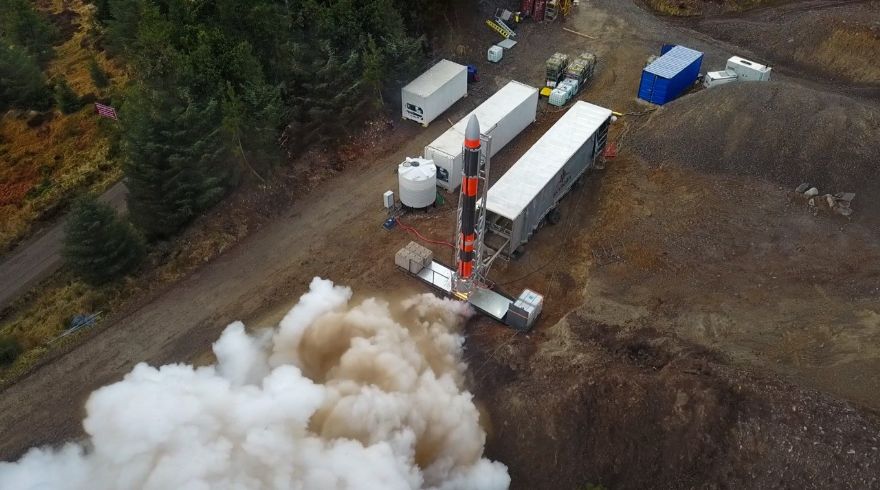 Photo: Skyrora
Photo: SkyroraA full-size rocket last month successfully carried out all actions needed to reach space, in the first vertical static fire test of its magnitude in the UK for 50 years. Edinburgh-based Skyrora Ltd said the Skylark-L rocket, the first of its type since the Black Arrow programme, could be ready to launch from British soil as early as spring 2021 – although the required spaceport infrastructure is not expected to be in place by then.
Skyrora CEO Volodymyr Levykin, said: “We see this as being the first significant step towards reaching space from our own soil and are very proud to have taken that step as part of the UK's space ambitions and we are now in a full state of readiness for launch. It is this milestone that is the start of the UK’s new space revolution, a fantastic example of the potential of what the UK space holds for the future.”
The team built a mobile launch complex and completed the full static fire test in just five days. Kildemorie Estate in the Scottish Highlands hosted the test, in which the launch vehicle performed all actions of a launch while restrained to the ground to prevent take-off.
The Skylark-L is a bi-liquid propellant launch vehicle and is Skyrora’s first sub-orbital flight vehicle, ready to reach a height of approximately 100km – just on the border of space, known as the Kármán line – and carry a payload of up to 60kg. The rocket uses a propellent combination of hydrogen peroxide and kerosene, which are pressure-fed into a Skyrora 30kN engine.
Building up to the static fire test, the rocket engine itself went through three hot fire tests before integration into the vehicle. When commercially viable, the company plans to use its own ‘Ecosene’, a kerosene equivalent made from non-recyclable plastic waste. The full static firing test let the team fully check the design and in-house manufacture, making sure it is ready for launch.
Dr Jack-James Marlow, Skyrora engineering manager, said: “It is very hard to oversell what we have achieved here. The rocket engine successfully burned, with all vehicle systems showing nominal operation and the test not only validated the vehicle, it also tested our mobile launch complex’s ground equipment and performed many cold flow and fuel/de-fuel tests. In all, there were over 100 unique operations and the team has gained vital experience.
“This collection of tests, combined with the 25 other engine tests this year, allow us to take another step along our technology roadmap to orbital launch.”
Mr Levykin comtinued: “As the launch aspect of the UK's new space industry starts to emerge, there will be many events that have never happened here previously and this is one of them. This was a mammoth effort in very trying circumstances, so it is quite an achievement to be proud of. The operation was carried out while having to adhere to very strict social distancing measures, and in an extremely remote location, providing additional challenges, all of which were handled expertly by all the team.”
He added: “With the expertise in place and all the necessary hardware at the ready, we are poised to take the next steps in making the UK a serious leader in the space business once again.”
Plans are under way to build the UK’s first spaceport in Sutherland, on Scotland’s north coast. Construction was expected to take about 15 months, but the project has reportedly been hit by delays during the coronavirus lockdown.
During the test, the Skylark-L was supported by Skyrora’s transporter-erector that was fixed to the trailer. The mobile complex was made up of several modules including a command centre, oxidiser and fuel-handling containers, as well as a compressed gas container.